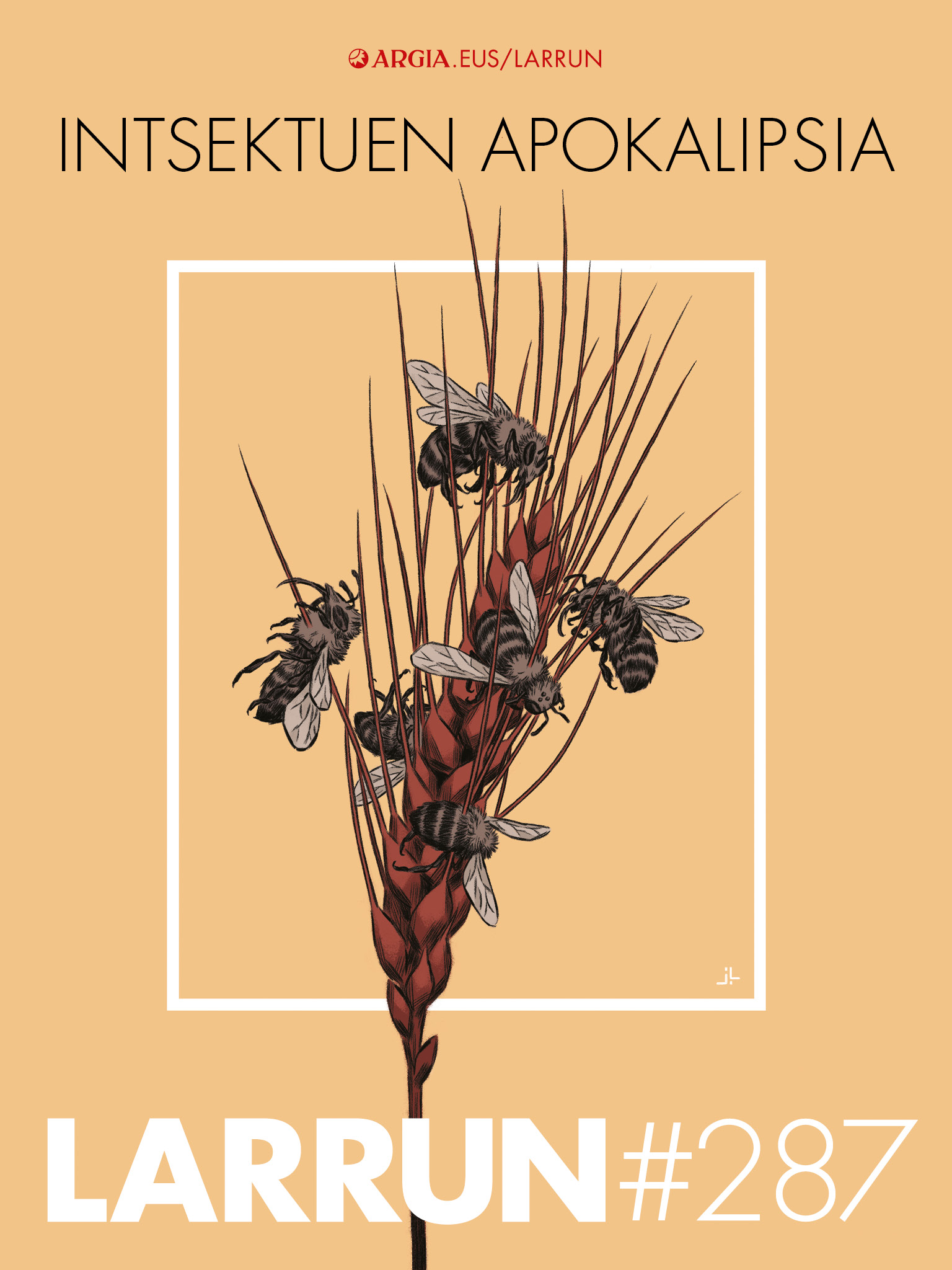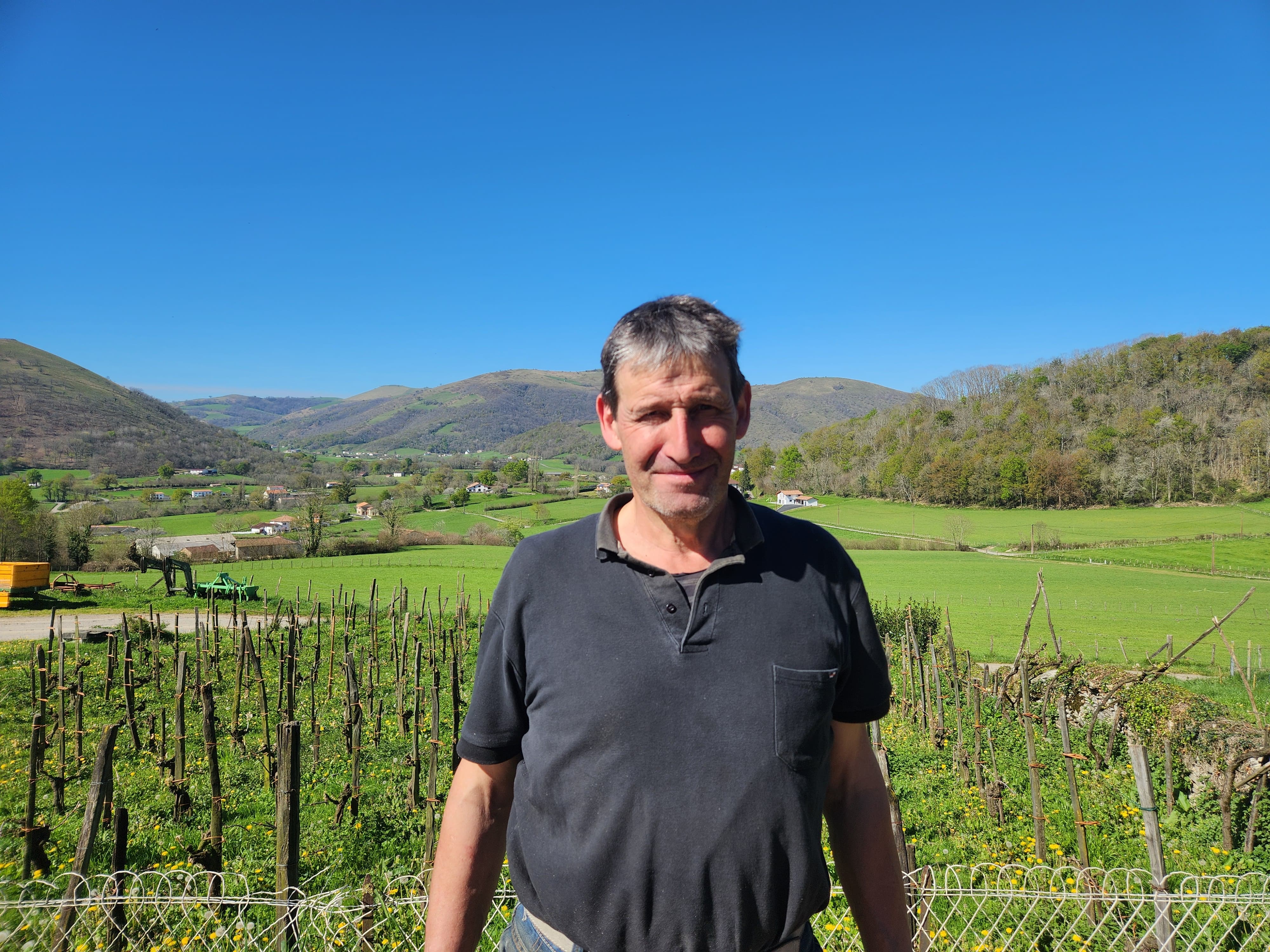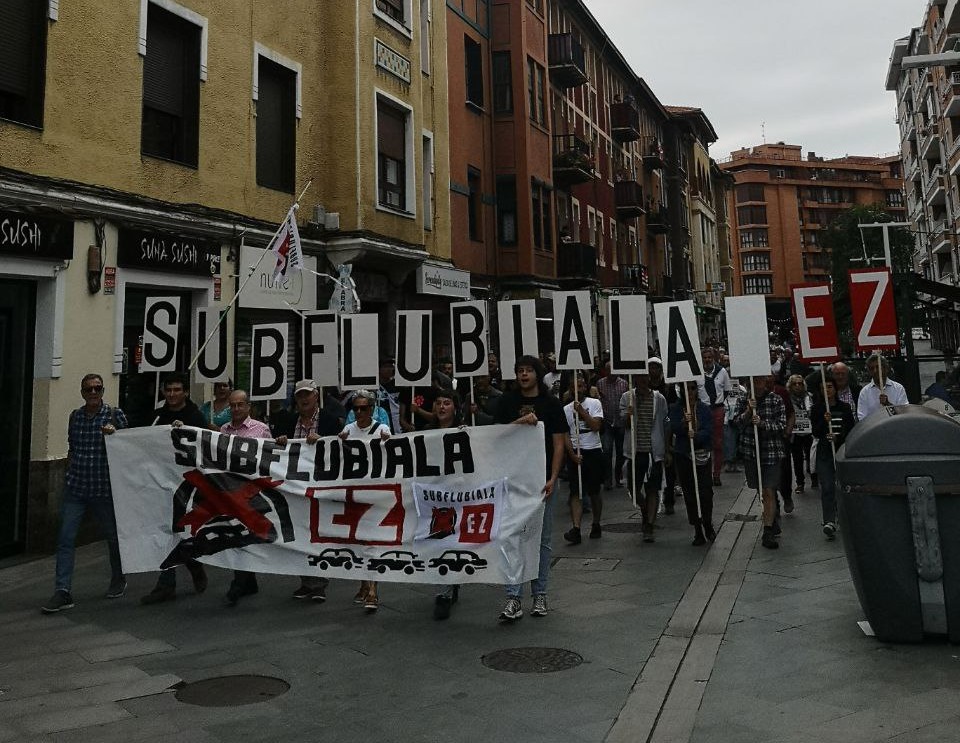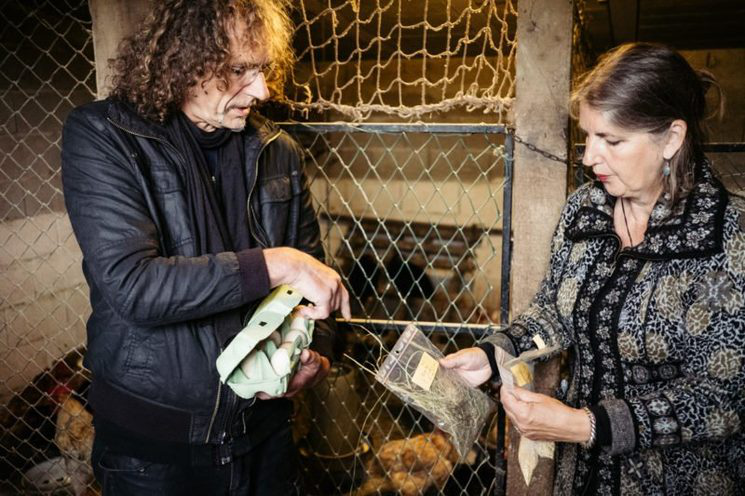Apocalypse of insects in the anthropocene
- The question is whether any civilization can wage a ruthless war on life, without destroying itself and without losing the right to call civilized.” 1 It's been six decades since Rachel Carson wrote her excellent book Silent Spring, which is often seen as the creation of the modern environmental movement. Carson's goal was to stop the insect massacre, and many believed that its cause was successful when the widespread use of insecticide DDT was stopped. The victory lasted very little. When Silent Spring was released, my family had just gone to a rural area in eastern Ontario. As a teenager, I didn't like having to abandon the social life of the city, but I was fascinated by the visions I never saw in the city. In summer, above all, a meadow near the house, during the day the butterfly was full of kings and at night fireflies. I spent many hours watching the insect show. Lis and I continue to live in that house and the camp is still there, but for decades we have not seen monarchs or fireflies. The permanent slaughter of these six-legged animals is bigger and more pernicious than Rachel Carson's imaginable. The original article is InustiApocalypse in the Anthropocene, divided into four parts. The title of each section has been adapted by ARGIA. The author is the director of the publication and with his authorization we have brought the article to ARGIA. The translation was done by Xabier Letona.
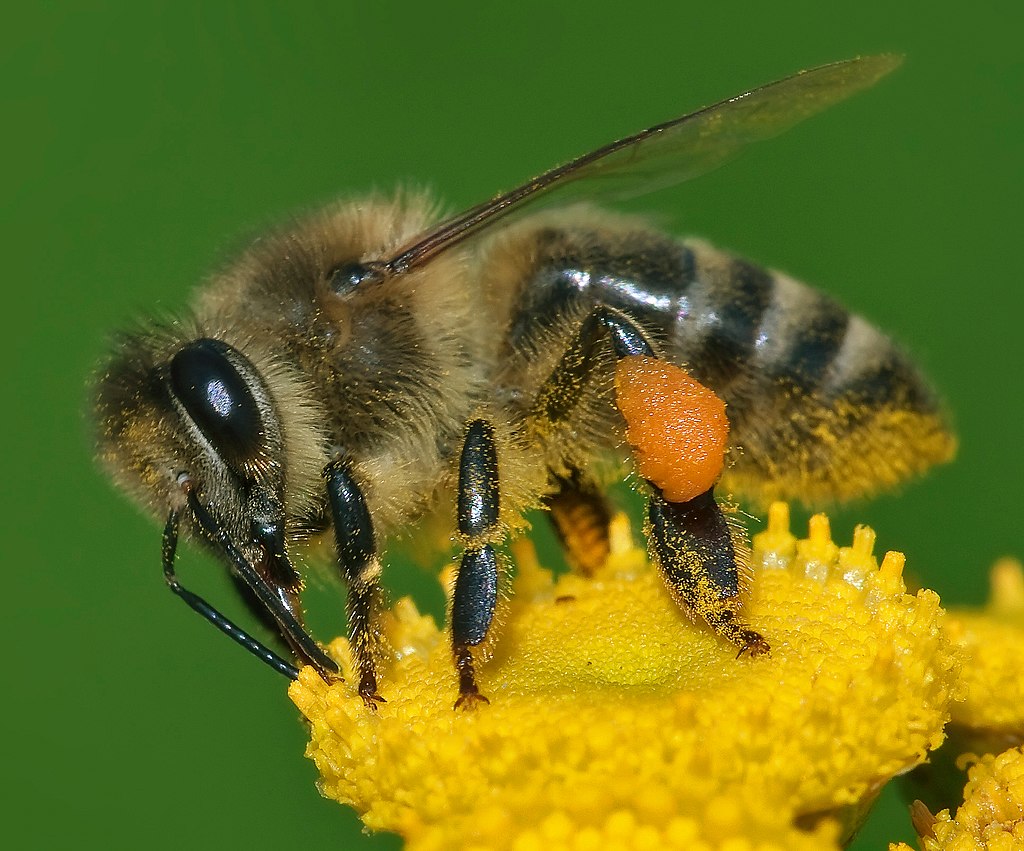
On 3 February, a comprehensive report showed that 80% of UK butterfly species have declined dramatically since the 1970s, of which half are currently listed as threatened or almost threatened species.2 Butterfly is the most demanding of insects, so its decline is very significant. If there are fewer butterflies, there may be fewer insects in all species.
On the same date, scientists at the Chinese Academy of Agricultural Sciences announced that since 2005, every year, the species of 98 flying insects migrating through Bohai Bay between China and Korea are in decline. The number of herbivorous insects has decreased by 8% and the predatory insects that consume them by about 20%. According to the authors, the data show a serious decline in functional diversity (insects) and a continued loss of ecological resilience across East Asia. 3
These studies have been conducted at two opposite ends of the planet and are a further proof of the rapid global decline of insect populations. Most conservation groups illustrate the collection speeches with pictures of bear panda, tigers and rare birds, but the widespread decline of insects is the greatest threat to all living beings of anthropocene. Scott Black, executive director of the Xerces Society, a nonprofit organization that protects insects and other invertebrates, summarizes the risk in a nutshell:
“Although we care badly about the planet, we will disappear before insects. Yes, we will see fewer birds in the sky if we see any. If you want birds, you need insects. If you want fruits and vegetables, you need insects. If you want healthy land, you need insects. If you want diverse plant communities, insects.”4
.jpg)
Insects are fundamental to what Karl Marx called the universal metabolism of nature, the energy that makes life possible and the continuous recycling of matter. Arthropods, especially insects, but also spiders, mites, texans and myriapods, pollinate 80% of all plants, recycle the essential nutrients of life, create healthy and fertile soils, clean water and are the primary food of many birds and other animals. If they disappeared completely, the biosphere would collapse and humanity would not last long.
“Most fish, amphibians, birds and mammals would not disappear much later. Subsequently, it would be the turn of most flowering plants, along with the physical structure of most forests and other terrestrial habitats around the world. The earth rots. As dead vegetation accumulates and drains, channels of nutrient cycles will tighten and close, so other complex plant forms, along with final vertebrates, will be eliminated. The remaining mushrooms would also die after a huge explosion of population. After a few decades, the world would return to the situation a billion years ago, populated mostly by a few simple plants of bacteria, algae and multicellular.”5
The fundraising speeches illustrate with photographs of Panda bear, tigers and rare birds, but the widespread decline of insects is the biggest threat to all living beings of anthropocene.
It is clear that the disappearance of all insects will not occur in the short term, probably some will continue alive after the disappearance of humanity. The total disappearance of some species and the strong decline of others, which some scientists call defaunation, are proven. “If it is not controlled, defaunation, besides being one of the characteristics of the sixth mass extinction of the planet, will be the engine of profound global transformations in the functioning of ecosystems.”6
Most records of living things are based on mammals, birds, fish and reptiles, but actually most animals are insects. No one knows exactly how many there are, but a good calculation says that it's 10 trillion, that's 10 trillion, and then 18 zeros, more than a billion insects per person. Together they weigh more than all other animals, including humans. In the United States alone there are 23,700 species of beetles, 19,600 species of flies, 17,500 species of ants, bees and wasps, and 11,500 species of sits and butterflies. Globally, one million insect species have been catalogued and an estimated four million have not yet been identified or allocated. At the present rate, many of them will disappear even before we know that humanity exists.
With such large populations it is difficult to imagine that all or a significant part of them may be in danger. Butterflies are beautiful and beneficial honey bees, but furthermore, until recently, reports on biodiversity loss hardly talked about these insect threats. 7 The Sixth Extinction, in Elizabeth Kolbert’s award-winning book published in 2014, for example, makes a brief reference to the decline of insects, but only as a result of the Jungle. In Dodging Extinction by Anthony Barnosky, insects are also cited twice, and The Uninhabitable Earth by David Wallace-Wells contains only three paragraphs on insects in 2019.
These authors did not arbitrarily abandon our hex relatives, their absence reflected a vacuum rooted in scientific literature. But in October 2017 there was a turning point, twelve European scientists published a pioneering report on the decline of flying insects in German nature protection areas. Around three decades, members of the Entomological Society of the German city of Krefeld engaged in capturing and counting insects in 63 natural reserves, helped by traps in the form of a tent. A study published in the journal Plos One showed a disturbing trend affecting bees, wasps, butterflies, flies, beetles and other insects.
“Our results indicate that the average biomass of flying insects has decreased by 76% in just 27 years in nature conservation areas in Germany. The widespread decline in insect biomass is worrying, especially given that all traps are in protected areas that must preserve ecosystem functions and biodiversity. While the progressive decline of rare insect species has long been known (e.g., strangest butterflies), our results show the rapid and continuous decline of all active flying insects in time and space.”8
Nobody knows exactly how many there are, but a good calculation says that it's 10 trillion, that is, 10 and then 18 zeros; over a billion insects per individual.
In 2018, another group of scientists showed that between 2008 and 2017 there was a significant decline in the variety, biomass and abundance of German grass and forest insects; and a study published in the journal Proceedings of the National Academy of Sciences showed that insect populations in Puerto Rico's tropical forests decreased by 98% since the 1970s. Although there were doubts about some figures and about the methodology, “today there is strong evidence of insect decay,” as the famous British ecologist William Kunin wrote in the prestigious journal Nature. 10
These discoveries pushed ecologists and entomologists around the world to pull ancient research and records out of the drawers, looking for data that would help measure variations in insect populations. In 2019 he published a detailed review of 73 research papers published by the journal Biological Conservation.
“From the collection of published scientific reports, we estimate that the current proportion of declining insect species (41%) is twice that of vertebrates and eight times the rate of disappearance of local species (10%). This confirms the above findings. Currently, in countries where research has been carried out, about one third of insect species are in danger of extinction. In addition, around 1% of all insect species are added to the list each year, resulting in an annual loss of 2.5% of global biomass.”11
.jpg)
The studies mentioned at the beginning of this article show that studies on insect populations have increased. In February 2023, Google found over 30,600 references to endangered insects and Google from the School over 1,000 academic publications. I recommend two new books for an available collection of the latest research: Silent Earth by Dave Goulson and The InsectCrisis by Oliver Milman. Both are written by serious authors fleeing sensationalism, one speaks of the apocalypse of insects and the other speaks of the decay of deplorable insect populations. 12
Currently, in countries where research has been carried out, about one third of insect species are at risk of extinction.
Two prominent anthropocene scientists, Mark Williams and Jan Zalasiewicz, warn of the impossibility of exaggerating the threat of insect decay in the history of the biosphere The Cosmic Oasis, published in 2022, confirm recent studies:
“Two-fifths of insect species around the world may be in danger of extinction in a few decades; in general, they are being destroyed in urban and rural areas, and pollutants in aquatic areas are also being killed in series. Due to the deep integration of insects into the functioning of terrestrial ecosystems, the significant loss of quantity and diversity of these ecosystems would have incalculable consequences, as it can lead to a widespread collapse of ecosystems, including the one that sustains us.”13
Monoculture, desert of life
The main factor contributing to the decline of insects is the destruction of habitats, among which industrial agriculture stands out. Other insect habitats have also been altered or destroyed, but by their extension, crop habitats are a determining factor: agriculture occupies 36% of the total area and 50% of the habitable area. Within this vast area there are other large sub-areas where a merciless war on insects is taking place.
All agricultural activity disrupts local ecosystems and insect life, but ecologist Tony Weis explained that until recently agriculture had to collaborate with the natural environment if it wanted to be productive and not against it:
“The long-term viability of agricultural landscapes throughout history has been conditioned by maintaining the functional diversity of soils, cultivated species and three by maintaining the ecological balance and nutrient cycles of trees, animals and insects. To this end, agricultural ecosystems were managed with various techniques, such as multicultural, crop rotations, green fertilizers (returning non-decomposed plant tissues usually nutrient-rich legumes), fallow, agroforestry, responsible seed selection and the integration of small animal populations.” 1
In North America and Europe large holdings were made by the sum of the smallest. In the global south, on the contrary, deforestation has been the first step: approximately five million hectares of forests are cut each year.
The decades after the Second World War brought to agriculture the equivalent of the industrial revolution of the 19th century: since the small production of goods, the move to large-scale mass production dependent on fossil fuels took place. Most farms remained in the family, but what crops were grown and how more and more was decided in the meeting rooms of large companies. Agroecologists Ivette Perfecta, John Vandermeer and Angus Wright describe the metabolic revolution in food production:
“After the Second World War, the capitalization of agriculture was made with the inputs or inputs that initially originated from the inside of the farm, which then began to be done elsewhere and which also had to be acquired. Early machining of agriculture started and animal traction was replaced by mechanics, compost and fertilisers by synthetic fertilizers, and pesticides replaced traditional and biological control. The history of the technological development of agriculture was a process of capitalization in which farms lost their added value. On current farms, work comes from Caterpillar or John Deere, Exxon/Mobile provides energy, DuPont fertilizer and Dow or Monsanto pest management. The seeds, germ that allows agriculture, have been patented and must be purchased.” 2
In any case, as Michelle Marte, historian of agriculture, said, “the technological revolution of agriculture was more affordable for some than for others. Many small family farms could not make large investments needed to access new technologies, while they lacked the large land needed to make technologies economically viable. By 1955, the average operating costs of a holding tripled, as opposed to 15 years earlier, and the number of farms and people working in the field also decreased. From 1939 to 1950, the number of farms in the United States decreased by 40% and from 1960 to 1970 almost 50%, while the average farm size grew by 8 m2 per year.”3
.jpg)
a desert for most insects. (Photo: Silke Sohler. Wikimedia CC BY-SA).
According to the Department of Agriculture EE.UU, “in 2012 36% of farmland was on farms with at least 8,000 m2, 15% more than in 1987”4. if only 12% of agricultural holdings EE.UU. They can be considered very high, representing 88% of the net annual income of all farms. 5
Around 75 per cent of cultivated varieties worldwide have disappeared from agricultural markets, with nine plant species accounting for two-thirds of total crops.
In North America and Europe large holdings were made by the sum of the smallest. In the global South, on the contrary, deforestation has been the first step: approximately five million hectares of forests are cut each year and managed by large farms and ranges managed by large companies. Between 1980 and 2000, more than half of the new tropical agricultural lands were due to logging. Between 2000 and 2010 the proportion rose to 80%6
Cost-effective management of large holdings with expensive machinery requires specialisation. Each crop has its own conditions and, therefore, instead of buying many types of machinery, the farmers focused on a particular species: maize, wheat, soy, etc. The crop matrix in which different crops are cultivated, so characteristic of traditional agriculture, was replaced by extensive extensions of genetically identical plants. Habitats of small mammals, birds and insects – fences, hedges, sketches and wetlands – were removed to maximize production and allow machines to reach all space.
Millions of small farms continue to produce many crops, but few large farms predominate in food production and marketing, and only one or two species of plants or animals are raised. Around 75 per cent of cultivated varieties worldwide have disappeared from agricultural markets, with nine plant species now occupying two-thirds of total crops. As Michael Pollene points out, this has important implications for human diets: this vast supply of an American supermarket is based on close biological support. In a small group of plants, the only dominant species is Zea mays, the giant tropical gramineae that most Americans call corn. 7 According to ecology historian
Donald Worster, the agricultural transformation of the twentieth century was a total simplification of the natural ecological order.
"Monoculture alone has reduced the diversity of insects. Some insects have evolved to live anywhere, but many cannot survive without certain plants."
“The biological community of plants and animals was at an extremely complex time and science had difficulty analysing it as a whole. Later, traditional farmers changed this ecosystem, but local food systems and other materials continued to be very diversified. And over time, it has increasingly become a rigid, programmed tool that competes for economic success in large markets. In the current language, we call this new type of agro-ecosystems monoculture, which designates a part of nature, which has dispersed to cultivate a single species, which grows in a territory, because it has a strong market demand somewhere”. 8

Sword. (Photo: J.J. Harrison. Wikimedia CC BY-SA).
As John Bellamy Foster wrote, "this disconnection of natural processes between themselves and their complete simplification is a natural tendency of capitalist development."9 For an economic system that constantly leads to simplification and commodification of all things, millions of insect species are an unnecessary and involuntary complication.
Monoculture alone has reduced the diversity of insects. Some insects have evolved to live anywhere, but many cannot survive without certain plants. For example, monarch butterflies can only eat cotton leaves, whose eggs will not spread if placed on any other plant. The simplification of
millions of hectares has drastically reduced the number of monarchic butterflies, as it has done with many other species specialized in a habitat. Thousands of hectares of maize, soy or wheat provide food and support, but they are deserts for these species. However, industrial agriculture is not limited to the passive elimination of insects and is aggressively opposed to them.
War on herbicides and pesticides
Between December 2018 and February 2019, beekeepers in southern Brazil found more than five hundred million meliferous bees dead. If they had also counted wild bees, the dead were much more. The main cause, according to laboratory tests, was exposure to synthetic pesticides.
It was the influence of the first massive synthetic pesticides, dichlorodiphenyltrichloroethane, better known as DDT. He began his business life as a weapon of war, a magical invention that protected Asian and African American troops from malaria, typhus and other diseases. Time magazine, a propagandist of American warmongers, considered "one of the greatest scientific discoveries of World War II" 2. Cheap and easy to produce, as Rachel Carson wrote in Silent Spring, this and other synthetic insecticides were much more lethal than any previous product.
“In addition to poisoning, they have an enormous capacity to enter the most intense processes of the organism and modify them. Authorized for civil use in 1945, DDT was related to the rise of large-scale monoculture agriculture. DDT enhanced monocultures by eliminating the insects that attracted them.”3 But soon experience showed that the process was not only a consequence.
.jpg)
Maxmann. Pixabay CC0)
As Carson wrote, "insecticides are not selective poisons: not only do the species we want to eliminate die."4 They killed birds that ate insects to which DDT was applied, as well as fish from rivers close to the sprayed areas. Beekeepers lost hundreds of hives when applying DDT in a nearby garden. The venom was introduced into the feeding chains: birds eating small animals feeding on insects exposed to DDT lay eggs so thin that they broke before the puppies arrived. Farmers were also poisoned by a pesticide, and by the end of the 1950s it was shown that DDT and other pesticides used were carcinogens.
Like today’s climatologists, Carson had to face an incipient chemical sector campaign, but in the end, after the tragic death, in the 1970s DDT was banned for most American and European uses. Nine organochlorine pesticides, including DDT, were banned worldwide by an international treaty that entered into force in 2004.
Unlike nicotine and many other insecticides, neonics are not limited to storage on plant surfaces and spread through the circulatory system, poisoning everything from the tip of the roots to the most recent leaves.
However, laws and treaties are far behind the agrochemical reality. The chemical industry spent a lot of money replacing DDT with other poisons. The production and use of pesticides has spread enormously since the time of Carson, and the most used products are more lethal than you might think. The long chemical war against insects has become an important factor in the decline and disappearance of insects, and a model of the agricultural and chemical industry has benefited from this murder.
As Canadian environmental researcher Nick Gottlieb recently wrote, “Carson offered us through his work a vivid and credible description of the sterile world that was creating the chemical industry. But, at the same time, it was a clear analysis of why this dynamic was offered, offering two explanations: one, the natural impulse of capitalism for accumulation in itself; and two, that big companies and capitalists would use all the instruments at their disposal, including the state itself, to create markets and increase profits.” 5
One of Carson's clearest warnings was that farmers would have to use more and more pesticides, because the attacked organisms would develop immunity: "Chemical control is forever, it must be repeated frequently, and also expensive."6 Decades later, more and more insecticides are used, as British entomologist Dave Goulson shows.
“According to official statistics, in 1990 UK farmers treated with pesticides 45 million hectares. However, in 2016, as many products as 73 million hectares were used, but the actual extension of farmland was the same, 4.5 million hectares. That is, land treatment increased by 70% in just 27 years.”7
When Carson wrote Silent Spring, the pesticide industry generated enough poison to apply a quarter of a kilo to every acre of world farmland (4 m2). It currently produces three times that amount. As Nick Gottlieb says, “pesticide resistance is not a problem for chemical manufacturers, for them it is a business plan.”8
In 2016, Bayer and half a dozen manufacturers exceeded sales of almost €2.7 billion in one year, making the product the most used and profitable insecticide in the world
This business plan, besides selling more devastating chemicals, contemplates the development and dissemination of more deadly products. In the XXI century, the decrease in the insect population has accelerated, both by the application of higher doses of venom and by the promotion of a new generation of supervenoms.
Farmers have known for a long time that a natural insecticide can be prepared for tobacco to stick to the water and stick some detergent. Wet with it fruits and plants, kill plant pus and other absorbent insects. In 1992, Bayer created a new nicotin-like product, which in three years absorbed 85% of the global insecticide market. In 2016, Bayer and half a dozen manufacturers exceeded sales of almost €2.7 billion in one year, making the product the most used and profitable insecticide in the world.
Neonicotinoids, which are reduced as neons, offer the farmer three important advantages. They are less harmful to people than previous insecticides. They are easy to use: the most common way is to moisten or cover the seeds with this insecticide, so if we sow the seeds, the crop is protected. And they are especially effective in insect killing: a small dose can eliminate 7,000 times more meliferous bees than the same amounts of DDT.9 A 2019 study found that in American agricultural lands "the toxicity burden with insecticides is approximately 50 times greater in the last two decades"10.
Unlike nicotine and many other insecticides, neonics are not only stored on the surfaces of the plant and spread through the circulatory system, poisoning everything from the tips of the roots to the most recent leaves. Only about 5% of the chemical is introduced into the plant to be protected, and since neonics are hydrosoluble, the remainder is dispersed through groundwater to other plants and rivers. The seeds of the most important crops in more than 100 countries are already sold impregnated or coated with insecticides, so areas around the world are contaminated, not only by deliberate treaties.
Studies conducted by the U.S. Department of Agriculture have detected neonatal waste in a wide range of products, including baby foods. 11 In studies conducted in 2017 with hundreds of people from thirteen Chinese cities, almost all had urinary insecticide. 12 The widespread use of neonates greatly aids in the apocalypse of insects, especially in the fall of pollinators.
“Of course, anything that spreads on all sides of the plant will also get into pollen and nectar, but that doesn’t seem to have worried anyone. And, of course, crops like rape and sunflower require pollination and that’s why they’re known to many types of bees, so when plants flourish bees ingest insecticide during the pollination process” (Goulson, Silent Earth). 13
.jpg)
Ad published in Time magazine in 1947 on DDT: "DDT is good for me."
There is no need for lethal amounts of neonates to cause destruction among pollinators. One in every billion of a quantity is enough to weaken the bee's immune system, which disrupts its orientation capacity and reduces egg laying and life expectancy in the queens. This has led to high levels of mortality in commercial hives: in the United States, for example, in the winter of 2020-2021, 45% of honey bee colonies died, the second highest ever recorded. 14 A full sub-sector of worker bees and queens has been developed to revitalize the world of bees.
No one knows how many types of insects die as a result of the new generation of super-maters, but, as Dave Coulson says, "now it seems that the world's insect species are chronologically exposed to chemicals created specifically to kill them" 15.
At the same time, genetic engineering has turned farms into anti-insects.
Genetic engineering: attacking inside the plant
Plants are the basis of almost all trophic chains, and when new forms of cultivation remove almost all the foreign herbs from farmland, we are left with pure monocultures and turn much of our fields into places unsuitable for most forms of life. (Dave Goulson)1
For decades, GM advocates have promised wonderful crops that would save lives and feed the world. For example, cereals that flourish in a drought. They've sold that it will improve their nutrition until they predict rice with vision protective vitamins. Apples that don't rot. Reduction of CO2 emissions. More food in less land and more.
According to the International Service for the Purchase of Agricultural Biotechnology Applications (ISAAA), the benefits of genetic change are so high that the area dedicated to GE crops grew from zero to 190.4 million hectares between 2016 and 2019. “It has been the fastest leap in history for agricultural technology.”2
However, if we look at ISAAA statistics, we will see that 85% of the area dedicated to GE crops is located in only four countries, the USA, Brazil, Argentina and Canada, and that approximately 99% of all genetic changes in commercial crops fall into two categories: herbicide tolerance and insect resistance. As we can see, these ingredients have nothing to do with improving food quality. Moreover, over 90% of GE crops are soy and maize, and are mainly used for fodder and biofuels, not for feeding hungry people.
Over 90% of GE crops are soy and maize and are mainly used for fodder and biofuels, not for feeding hungry people
The main results of agricultural genetic engineering have been the expansion of monocultures in North and South America, the increased use of chemical poisons and the increase in the profits of large companies that dominate the production of GE chemicals and seeds. The GE has been discussed for a long time on the influence of crops and associated pesticides on human health, but in this article we will not enter into it and, on the contrary, we will analyze how they influence the expansion of mass monocultures that destroy lives.
.jpg)
Explaining to Kenyan farmers the benefits of genetically modified maize. (Photo: Dave Hoisington/CIMMYT. Wikimedia CC BY-SA)
We've seen how the action of herbicides and monoculture
has driven the apocalypse of insects, but in the 1990s, an even more destructive agriculture began: that of the gene revolution. The rapid transition was led by the chemical company Monsanto, based in Saint Louis (USA), with the product Roundup, which removes weeds. Of course, “weeds” is not a scientific category, they simply compete with desirable plants for agriculture. Traditionally, peasants have always resisted them through various techniques, including subtraction. It continues to be done in many parts of the world. In the early twentieth century, the first chemical products began to be used in Europe and the United States, but their diffusion took place mainly from 1940 onwards. Since then, weed control was mainly done with these products.
Monsanto published Roundup in 1976. Its main component is glyphosate that kills plants, blocking the ability to produce its basic proteins with this chemical. It was mainly used to clean the grounds before planting and to remove unwanted herbs in the fields of grass and arcenes, but it would also kill crops if sprayed on them or in their environment.
In 1996, Monsanto changed it thanks to genetic engineering: instead of changing the poison, it changed the plants. Two families of genetically modified seeds were very successful. On the one hand, Roundup Ready (RR) seeds changed to fold the glyphosate. Therefore, if the product Roundup is poured into a RR growing area, it would kill all plants except that monoculture. It was first marketed for soya and rape and then for maize, alfalfa, cotton and sorghum. On the other hand,
Monsanto corn and cotton seeds were modified to contain the genes of Bacteria thuringiensis (Bt), a toxic organism for some caterpillars and beetles that feed on these plants. Therefore, plants obtained with seeds processed with Bt generate their own insecticides.
It accounted for 1% of herbicides applied to the four largest crops in the United States in 1982, 4% in 1995, 33% in 2005 and 40% in 2012.
Monsanto then sells corn and cotton seeds with the two genetic characteristics mentioned. Thus, according to ISAAA, currently 45% of genetically modified (GM) crops are plants filled with genes of herbicide tolerance and insect resistance.
And yes, patented seeds were more expensive, but they simplified production. Glyphosate could now be sprayed during plant growth without damaging crops, leading to areas where pure monocultures and competitive plants could not grow.
Farms producing Roundup Ready crops could be mechanized almost entirely, minimizing the workforce, as Monsanto pointed out in her advertising, because Roundup was deadly to all non-GE plants: "It's the only weed control you need." It opened the glyphosate and in turn the glyphosate-resistant seeds. So a company website called the combination of the two "a system that gives you freedom." 3 At the same time, Monsanto closed the market for agricultural inputs by buying
more than 30 independent seed companies, becoming the world’s largest seed seller in 2005. Control of chemicals and seeds, together with distribution channels, provided the company with a major advantage in the agricultural input industry. "In just two years, between 1999 and 2000, the company forecast an 18% increase in the volume of glyphosate products marketed to its shareholders." In 2000, half the sales volume of $4.9 billion came from glyphosate.
For two decades, glyphosate has become the most widely used herbicide in the world. It represented 1% of the herbicides applied in the four most important crops in the United States in 1982, 4% in 1995, 33% in 2005 and 40% in 2012 /8. "In 2020, 90% of maize, cotton, soy and sugar beet planted in the United States for the acceptance of one or more genetically modified herbicides."4 Soy and maize
are the most cultivated crops in the United States, which together occupy 77 million hectares and more than 90% of this area is sown with genetically modified seeds. [5] If we add cotton, sugar beet, alfalfa and rapeseed to smaller genetically modified areas, and add 29 million hectares of Canadian GE crops, we will have an enormous harmful extension for insects.
Soy and maize are the most cultivated crops in the United States, which together occupy 77 million hectares, of which more than 90% are sown with genetically modified seeds.
South America
The increase in sales of Monsanto Roundup Ready soy beans was not limited to North America. In the Southern Cone of South America, where land ownership is much more concentrated than in the global North, the large landowners immediately took the seed/herbicide combination. In 1996 it began in Argentina and in the next decade it extended to southern Paraguay, Uruguay, Brazil and Bolivia. One of the most affected areas was the workforce and chemicals represented millions of small farmers, and allowed their owners to create huge soya plantations run by investor groups. Eleven per day laborer used in soy production GE in Brazil. 6
In 2016, environmental journalist Nazareth Castro estimated that "about 60% of farmland in Argentina, a similar percentage in southern Brazil and almost 80% of those in Paraguay are already engaged in soy cultivation and almost everything is genetically modified."7

Saying "Soy knows no borders," agrochemical giant Syngenta called this space in a 2003 announcement "United Soy Republic."
According to a new study based on satellite images, "between 2000 and 2019, the spread of soy cultivation doubled enormously, from 26.4 million hectares to 55.1 million hectares. The greatest extent of soya was found in pastures dedicated to natural vegetation and livestock. The fastest expansion occurred in the Brazilian Amazon...Across the continent, 9% of the cut forests went on to grow soy in 2016."8
As in North America, soy production in South America has been associated with the massive use of herbicides, especially glyphosate. In Brazil, soy crops GE are spread on average three times per cycle with glyphosate; only in 2019, Brazilian farmers applied 218,000 tons of herbicide.
Resistance and routine
In Silent Spring, Rachel Carson described how extensive use of pesticides influenced the evolution of insects and adventitious plants (“weeds”) that chemicals did not eliminate. Darwin himself could not find a better example of how natural selection works either. The application of the poison eliminates the weakest insects. The only survivors have a quality level that prevents damage -- the result is a population of resistant strains. 10
When Monsanto asked the Department of Agriculture for EE.UU. Roundup Ready seed authorization told him that "it was very difficult for the resistance of weeds to glyphosate to become a problem due to the marketing of soybean tolerant to it." Instead of producing resistance, "the use of herbicides can be reduced."11
Few scientists agreed with Monsanto. Ecologist Miguel Altieri, for example, announced in 1998 in the socialist magazine Monthly Review that "these crops will likely increase the use of pesticides and" "accelerate the evolution of resistant strains of superweeds and insect pests"12. That is what has happened.
In a few years, glyphosate resistance has spread to 50 species in South America and North America. Some are particularly destructive, such as the uncontrolled growth of amaranth (amaranthus palmeri) can reduce the harvest of soy by 80% and maize by 90%.
Faced with the growing resistance of adventitias, peasants initially decided to apply higher amounts of glyphosate in the same crops to control these herbs. As glyphosate-resistant herbs continue to form, farmers, encouraged by herbicide manufacturers, apply increasingly older and toxic chemicals such as dicamba and 2,4-D. 13
The addition of Bt genes to maize and cotton has also increased insect resistance and pesticide use. According to the 2022 Pesticide Atlas, insecticide sales have significantly increased maize production in the United States. In 2018, farmers in India spent 37% more money on buying insecticides per hectare before introducing genetically modified cotton in 2002. 14
Until recently, GE seeds had up to three genetic changes, but Bayer, which bought Monsanto in 2018, has introduced eight genetic changes to its Smartstax Pro Corn. These transformed seeds tolerate the herbicides glyphosate and dicamba, while producing five different Bt insecticide toxins, and use a new RNA interference technology to block the production of essential corn proteins, which is the one that is particularly harmful.
Monoculture and capitalism
In 1859, in the last paragraph of the book The Origin of Species, Charles Darwin described the natural world as: "It is a very thick river bank, covered with all kinds of plants, birds singing in brawls, flying insects and earthworms that crawl through moist soil -- so different from each other and with such complex and dependent forms among them."
If Darwin could see what capitalist agriculture has done on the banks of the time, he would undoubtedly join the conservative environmentalist Ian Rappel: "Monotony of monocultures has been replaced by the wonderful biodiversity at the heart of capitalism's socio-ecological metabolism." 15
"Excellent biodiversity has been replaced by monotony of monocultures at the heart of capitalism's socio-ecological
metabolism" IAN RAPPEL
“The active engineering of capitalism is the object of ecology and is conditioned by the lucrative passion of the ruling class… Capitalism has fought against nature and has wanted to maintain its devastating ecological tendency driven by the artificial ecological commodity of various sectors of the capitalist industry, such as agriculture. This generates a dysfunctional tendency to uniformity and ecological simplicity that will necessarily lead to the loss and destruction of biodiversity.” 16
The production of a few plants that can be sold profitable on world markets has been imposed above all; large monocultures have been created on farms that are factory shaped and poisoning and killing the immense shore of the Darwin River. But maintaining these monocultures increasingly requires chemicals that are caught in a very profitable routine for the agricultural and chemical industry. Worldwide herbicide sales are estimated at €34.7 billion in 2021, and are likely to reach €43.6 billion by 2027. The equivalent figures for insecticides are 17 billion and 25.3 billion.
While many agrochemical companies and commodity traders control the inputs and production of global agriculture, capitalist dynamics will continue to impose monotony on monocultures, accelerating the apocalypse of insects.
BIBLIOGRAGIA
Apocalypse of insects in the anthropocene
[1] Rachel Carson, Silent Spring (Mariner Books, 2002), 99.
[2] R. Fox (among others, za. ), The State of the UK’s Butterflies 2022 (Butterfly Conservation, 2023).
[3] Yan Zhou (za. ), “Long-Term InustiCensuses Capture Progressive Loss of Ecosystem Function in East Asia”. Science Advances 9 (February 2023).
[4] Oliver Milman, The Independent Crisis: The Fall of the Tiny Empires That Run the World (W.W. Norton, 2022), 61.
[5] E. O. Wilson, The Little Things That Run the World (the Importance and Conservation of Invertebrates),” Conservation Biology 1, (1987), 345.
[6] Rodolfo Dirzo (za), “Defaunation in the Anthropocene,” Science 345, number 6195 (Julio, 2014): 406.
[7] Rachel Carson was one of the exceptions, but her first concern was not insects, but insects, and the influence of DDT on the birds that ate them.
[8] Caspar A. Hallmann (za. ), “More than 75 Percent Decline over 27 Years in Total Flying InindustrBiomass in Protected Areas”, Plos One 12, (18 October 2017), 14, 15-16.
[9] Sebastian Seibold (za)., “Arthropod Decline in Grasslands and Forests is Associated with Messenger-Level Drivers,” Nature 574, (30 October 2019): pp. 671-674. ; Bradford C. Lister and Andres Garcia, “Climate-Driven Declines in Arthropod Abundance Restructure a Rainforest Food Web”, Proceedings of the National Academy of Sciences 115, October 15, 2018.
[10] William E. Kunin, “Robust Evidence of Declines in IndependAbundance and Biodiversity,” Nature 574 (30 October 2019): 641.
[11] Francisco Sánchez-Bayo and Kris A. G. Wyckhuys, “Worldwide Decline of the Entomofauna: A Review of Its Drivers”, Biological Conservation 232 (2019): 16, 22.
[12] Oliver Milman, The Independent Crisis: The Fall of the Tiny Empires That Run the World (W.W. Norton, 2022), 5; Dave Goulson, Silent Earth: Averting the InindustrApocalypse (Harpercols, 2021).
[13] Mark Williams and J. A. Zalasiewicz, The Cosmic Oasis: The Remarkable Story of Earth’s Biosphere (Oxford University Press, 2022), 130-131.
Monoculture, desert of life
[1] Tony Weis, The Global Food Economy: The Battle for the Future of Farming (Fernwood Publishing, 2007), 29.
[2] Ivette Perfecta, John Vandermeer and Angus Wright, Nature’s Matrix: Linking Agriculture, Conservation and Food Sovereignty (Earthscan, 2009), 50-1.
[3] Michelle Mart, Pesticides, A Love Story (University Press of Kansas, 2015), 13. (with several date corrections, after examining the sources).
[4] James M. MacDonald, Robert A. Hoppe, and Doris Newton, Three Decades of Consolidation in U.S. Agriculture (USDA Economic Research Service, 2018).
[5] Timothy Wise, “Still Waiting for the Farm Boom: Family Farmers Worse Off Despite High Prices” (Tufts University Global Development and Environment Institute, 2011), 5.
[6] Erik Stokstad, “New Global Study Reveals the ‘Staggering’ Loss of Forests Caused by Industrial Agriculture”, Science, September 13, 2018.
[7] Michael Pollan, The Omnivore’s Dilemma: A Natural History of Four Meals (Penguin Books, 2006), 18.
[8] Donald Worster, The Wealth of Nature: Environmental History and the Ecological Imagination (Oxford University Press, 1993), 58, 59.
[9] John Bellamy Foster, The Vulnerable Planet: A Short Economic History of the Environment (Monthly Review Press, 1999), 121.
War on herbicides and pesticides
[1] Pedro Grigori, “Half a Billion Bees Dead as Brazil Approves Hundreds More Pesticides,” Mongobay, August 23, 2019.
[2] “DDT,” Time, June 12, 1944.
[3] Rachel Carson, Silent Spring (Mariner Books, 2002), 16.
[4] Carson, Silent Spring, 99.
[5] Nick Gottlieb, “The Lesson We Should Have Learned from ‘Silent Spring’, Canadian Dimension, January 3, 2023.
[6] Carson, Silent Spring, 98.
[7] Dave Goulson, Silent Earth: Averting the Independent Apocalypse (HarperCollins, 2021), 87-8.
[8] Gottlieb, “The Lesson We Should Have Learned.”
[9] Goulson, Silent Earth, 90-1.
[10] Michael DiBartolomeis, among others (za. ), “An Assessment of Acute Insecticide Toxicity Loading (AITL) of Chemical Pesticides Used on Agricultural Land in the United States”. Plos One, August 6, 2019. AITL is a measure that takes into account toxicity, amount used and venom absorption over time.
[11] Hillary A. Craddock, za., “Trends in Neonicotinoid Pesticide Residues in Food and Water in the United States, 1999–2015”, Environmental Health 18, (11 January 2019).
[12] Tao Zhang, za., “A Nationwide Survey of Urinary Concentrations of Neonicotinoid Insecticides in China,” Environment International 132 (November 2019).
[13] Goulson, Silent Earth.
[14] “United States Honey Bee Colony Losses 2020-2021,” Bee Informed Partnership, July 23, 2021.
[15] Goulson, Silent Earth, 109.
Genetic engineering: attacking inside the plant
[1] Dave Goulson, Silent Earth: Averting the Independent Apocalypse (HarperCollins, 2021), 123.
[2] ISAAA, “ISAAA Brief 55-2019: Executive Summary”, ISAAA, 2019,
[3] Bartow J. Elmore, Seed Money: Monsanto’s Χ and Our Food Future (W. W. Norton, 2021), 186, 187
[4] Erica Borg and Amedeo Policante, Mutant Ecologies: Manufacturing Life in the Age of Genomic Capital (Pluto Press, 2022), 124.
[5] Crop Production Historical Track Records (United States Department of Agriculture, 2019), 31, 164.
[6] Miguel A. Altieri and Walter A. Pengue, “Roundup Ready Soybean in Latin America: A Machine of Hunger, Deforestation and Socio-Ecological Devastation,” Biosafety Information Centre, August 8, 2005.
[7] Nazareth Castro, “United Republic of Soyabeans” and the Challenge to Agriculture”, Equal Times, December 12, 2016.
[8] Xiao-Peng Song, among others (za. ), “Massive Soybean Expansion in South America since 2000 and Implications for Conservation”, Nature Sustainability 4, (7, 2021 August), 784.
[9] Aldo Merotto, za., “Herbicide Use History and Perspective in South America,” Advances in Weed Science, September 15, 2022, 5.
[10] Rachel Carson, Silent Spring (Mariner Books, 2002), 273.
[11] “Petition for Determination of Nonregulated Status: Soybeans with a Roundup Ready™ Gene,” (1993) 56, 55.
[12] Miguel A Altieri, “Ecological Impacts of Industrial Agriculture and the Possibilities for Truly Sustainable Farming,” in Hungry for Business: The Agribusiness Threat to Farmers, Food, and the Environment, ed. Fred Magdoff (Monthly Review Press, 2000), 86. (Original article published in Monthly Review, July-August 1998)
[13] Jennifer Clapp, “Explaining Growing Glyphosate Use: The Political Economy of Herbicide-Dependent Agriculture”, Global Environmental Change 67 (March, 2021).
[14] Caspar Shaller, ed., Pesticide Atlas 2022 (Friends of the Earth Europe, 2022), 37.
[15] Ian Rappel, “The Habitable Earth: Biodiversity, Society and Rewilding”, International Socialism, 2021.
[16] Ian Rappel, “Capitalism and Species Extinction”, International Socialism, 2015.
I'm talking about Interview. With water and sand
Authors: Telmo Irureta and Mireia Gabilondo.
The actors: Telmo Irureta and Dorleta Urretabizkaia.
Directed by: Assisted by Mireia Gabilondo.
The company is: The temptation.
When: April 2nd.
In which: At the Victoria Eugenia... [+]
Euskal Herriko Laborantza Ganberak hogei urte bete ditu. 2005ean sorturik, bataila anitzetatik pasa da Ainiza-Monjoloseko erakundea. Epaiketak, sustengu kanpainak edota Lurramaren sortzea, gorabehera ainitz izan ditu hogei urtez.









